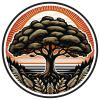What to Know
Here are the highlights of the State of Conservation Technology 2023 release:
- Explore insights from our 3-year analysis in the interactive trends report
- Support the future of this research by taking the 2023 survey
- Read up on the original open-access academic publication and web report from 2021
Read on to find out about 5 key insights from the report!
About the Research
As global environmental challenges continue to escalate, understanding how to leverage modern technology innovations for conservation impact most effectively becomes increasingly critical. Each year, WILDLABS surveys the global conservation tech community to find out what you are working on, what challenges you're facing, what support you need, and what you see emerging on the horizon.
For the State of Conservation Technology 2023 report, we’ve built on our 2021 results to conduct a three-year trends analysis, bringing you insights for the first time into how dynamics have been evolving across the community over time. As always, our hope with this research is to amplify a united voice to drive progress toward impactful and inclusive solutions for the planet.

Five key insights
1. Our understanding of existing tools and what has the highest untapped potential has shifted somewhat since 2020
In 2020, GIS/remote sensing, Drones, and Mobile Apps were rated as the best-performing technologies, while AI tools, eDNA, and Networked sensors were the groups with the perceived highest potential capacity to advance the field. The landscape is somewhat different in 2023: while GIS/remote sensing is still the highest-performing technology group, protected area management tools and bioacoustics have replaced drones and mobile apps as the other top-rated groups. Regarding their potential to advance conservation, eDNA moved from the top of the list to nearly the bottom, replaced by biologgers alongside networked sensors and AI tools.
Keep in mind that, while interesting, changes like this in the perceived potential of emerging technologies are not particularly surprising. As reflected in the technology hype cycle, a framework for understanding evolving interest in technologies over time, it is common for initial excitement to spike when a new tool emerges, which can then take a dramatic hit with early adoption challenges, and then usually grows to a productive place of iterative learning and effective application.

2. Engagement with AI, data management and processing tools, bio-loggers, and networked sensors is increasing.
Looking at reported engagement from users and developers across the 11 core technology groups over the three years, we see that some are increasing in popularity. While camera traps and GiS & Remote Sensing remain the most widely used technologies, AI tools, Data management and processing tools, Biologgers, and Networked sensors are the groups trending upward in engagement (highlighted in orange below). Press play to see how the numbers changed over time.

3. Sector-wide challenges and constraints remain mostly the same; historically marginalized groups including women and people from lower-income countries continue to face disproportionate challenges.
Regarding challenges facing the conservation technology sector, competition for limited funding and duplication of efforts remain the most pressing issues, but the severity of the latter might be decreasing somewhat. Matching technology expertise to conservation challenges has also emerged as a top concern.

In terms of specific constraints affecting engagement by conservation tech end-users and developers, a key finding is that location matters: both users and developers in countries with developing economies were more likely to report multiple significant constraints. Further results from our statistical analysis also suggest gender and professional roles as potential differentiators when looking at constraints, challenges, and opportunities – read our full report to learn more.

4. Most people are optimistic about the future due to positive trends, with some consistently identified opportunities for advancement.
People are generally optimistic about the future of the field, and this optimism has been increasing since 2020. The rapidly evolving nature of the field and the increasingly accessible nature of technologies are the two trends that make people most optimistic. Across all years, the community indicates that the primary opportunities for advancement include improving collaboration and information sharing and the increasing accessibility and interoperability of tools and data.

5. WILDLABS engagement had a measurable impact on members in some key areas.
WILDLABS has become the go-to place for conservation technology online - a central hub for the community to connect with and learn from each other, share their insights and innovations, and find collaborators across geographic and sectoral borders. This year, we saw that WILDLABS membership had a significant influence on some key challenge areas.
Although we have seen these trends develop and have captured them anecdotally over the years, it is exciting to see data support them for the first time. Results like these are critical for helping us understand our impact and continue to develop programs, events, and tools that respond most effectively to the community and sector’s evolving needs. Read our latest annual report to learn more.

How can you get involved?
WILDLABS is committed to making our global community and programs as inclusive as possible. For our research program, this means ensuring that the collective voice we convey is increasingly reflecting currently underrepresented user and developer communities. One important way you all can help us do that is by participating in our annual surveys and sharing them throughout your networks with folks we may not already be reaching.
To help us continue to capture the most accurate picture possible of where conservation technology stands and what is needed, please take a few minutes to take the WILDLABS Conservation Tech Survey 2023 and share it widely. Thank you!

Header image credit © Emma Vogel










Add the first post in this thread.